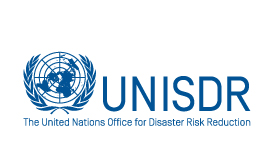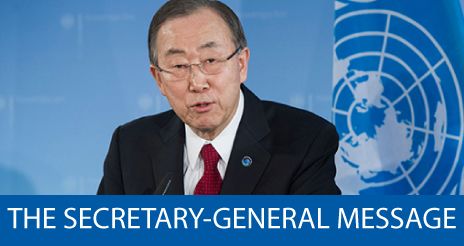
The #IDDR and The Sendai Framework
The Sendai Framework has targets focused on increasing national and local disaster risk reduction strategies by 2020, enhanced international cooperation to developing countries and increased availability of multi-hazard early warning systems.
International Day for Disaster Risk Reduction - #IDDR
The International Day for Disaster Reduction - #IDDR is a day to celebrate how people and communities are reducing their risk to disasters and increasing the awareness of the importance of disaster risk reduction. Also, this is a day to urge all citizens and governments to be part in efforts to establish communities that will make more disaster- resilient nations.
Topic of #IDDR2016: #LiveToTell
The United Nations General Assembly has designated 13 October as the date to celebrate International Day for Disaster Reduction (IDDR) to promote a global culture of disaster reduction, including disaster prevention, mitigation and preparedness. Since it began 25 years ago, the day has grown into a major global awareness event celebrated in many ways to encourage efforts to build more disaster-resilient communities and nations.
Following the Step Up Campaign, which started in 2011 and was dedicated each year to a particular group of vulnerable people exposed to disasters – Children and Youth (2011), Women and Girls (2012), People Living with Disabilities (2013), Older Persons (2014), and Indigenous People (2015) – UNISDR is now launching the Sendai Seven Campaign to promote each of the seven targets of the Sendai Framework for Disaster Risk Reduction adopted in Sendai, Japan in March 2015.
As was the case throughout the Step Up Campaign, the success of the Sendai Seven Campaign depends on engaging and connecting with a wide range of stakeholders to promote awareness of the Sendai Framework and actions required to implement it, and to achieve its targets.
The Sendai Seven Campaign is an opportunity for all, including governments, local governments, community groups, civil society organizations, the private sector, international organizations and the UN family, to promote best practice at international, regional and national level across all sectors, to reduce disaster risk and disaster losses.
Live to Tell: Theme of #IDDR2016
The 2016 campaign will seek to create a wave of awareness about actions taken to reduce mortality around the world. UNISDR wants you to use the opportunity of October 13 to tell the world what you are doing to implement the Sendai Framework in order to reduce mortality and improve health outcomes from disasters. Are you improving how people are becoming more risk informed? How are you doing it? Have you become more inclusive in your outreach with early warnings? We will share your stories, photographs and videos online through our social media channels, www. unisdr.org and PreventionWeb. Please send submissions to iddr2016@unisdr.org
Examples
Mortality Trends
The average recorded global mortality rate from 2005 to 2014 was 76,424 deaths per annum, according to the Centre for Research on the Epidemiology of Disasters (CRED). In 2015, CRED recorded 22,773 deaths. The following is a list of the main natural hazards with decadal average deaths, and deaths for 2015 in brackets: Floods, 5,938 (3,310); Storms, 17,778 (996); Drought, 2,030 (35); Landslide, 1,369 (923); Earthquake/tsunami, 42,381 (9,525); Wildfire, 73 (66); Volcanic activity, 46 (0); Mass movement (dry), 373 (0).
Technological disasters killed 5,884 people in 2014 and the annual average for the previous decade was 7,514. Such events include ferry boat sinkings; transport accidents account for 74% of deaths from technological disasters in the CRED database.
Major public health emergencies of international concern occur on a regular basis. Most recently the Ebola epidemic in the impoverished west African countries of Guinea, Liberia and Sierra Leone claimed some 11,000 lives and caused widespread trauma and economic losses. The rapid global spread of the Zika virus is another example.
Outcome
1. Greater global awareness of the Sendai Framework by presenting it as a life-saving agenda for building resilience to disasters caused by both man-made and natural hazards
2. Greater inclusion of representatives of vulnerable groups in national disaster risk reduction programmes
3. Public discourse to promote attitudinal and behavioral change towards disaster risk management
SENDAI SEVEN CAMPAIGN- Seven goals, seven years (2016- 2022)
The best examples we can find globally or from each region will be considered for nomination as a Sendai Target Champion for Reducing Mortality. Send your submissions to iddr2016@un.org by September 1, and the length should not exceed 500 words.
- 2016 – Target 1: Substantially reduce global disaster mortality by 2030, aiming to lower the average per 100,000 global mortality rate in the decade 2020-2030 compared to the period 2005-2015;
- 2017 – Target 2: Substantially reduce the number of people affected globally by 2030, aiming to lower the average global figure per 100,000 in the decade 2020-2030 compared to the period 2005-2015;
- 2018 – Target 3: Reduce direct disaster economic loss in relation to global gross domestic product (GDP) by 2030;
- 2019 – Target 4: Substantially reduce disaster damage to critical infrastructure and disruption of basic services, among them health and educational facilities, including through developing their resilience by 2030;
- 2020 – Target 5: Substantially increase the number of countries with national and local disaster risk reduction strategies by 2020;
- 2021 – Target 6: Substantially enhance international cooperation to developing countries through adequate and sustainable support to complement their national actions for implementation of the present Framework by 2030;
- 2022 – Target 7: Substantially increase the availability of and access to multi-hazard early warning systems and disaster risk information and assessments to people by 2030.
¿What are the origins of the International Day for Disaster Risk Reduction?
The celebration of the International Day for Disaster Risk Reduction #IDDR started in 1989. That year, the General Assembly of the United Nations approved its celebration, after considering that the #IDDR represents a way to promote a global culture of disaster risk reduction, which includes prevention, mitigation and preparation.
Originally, the #IDDR is celebrated the second Wednesday of October, but in the year 2009 the General Assembly decided to establish the 13 th of October of each year as the date in which the International Day for Disaster Risk Reduction - #IDDR would be celebrated.
 |
Mr. Robert Glasser, Chief of UNISDR today launched "The Sendai Seven Campaign – 7 Targets, 7 Years", an advocacy initiative to encourage implementation of the Sendai Framework for Disaster Risk Reduction with the goal of saving lives, reducing disaster losses and improving management of disaster risk. |
Mr. Glasser said today: "Despite many successes there are still far too many lives being lost in predictable events because of failures to deploy early warning systems, learn lessons from past events and to grasp the growing threat of climate change and its impact on extreme weather events including storms, floods and drought. "Risk awareness among the general public is a vital theme running through this seven year campaign which is centred around the seven targets which UN Member States have agreed on. These include substantial reductions in loss of life, numbers of people affected, economic losses and damage to infrastructure..
Celebrating IDDR? Share your photos!
Share something special you´ve learned from Mortality Trends
¿Questions?
To obtain more information regarding the International Day for Disaster Risk Reduction please address the communications team of UNISDR jaime@un.org
This page was made under the lineaments of the document regarding Internet accesibility to webpages of the United Nations.




